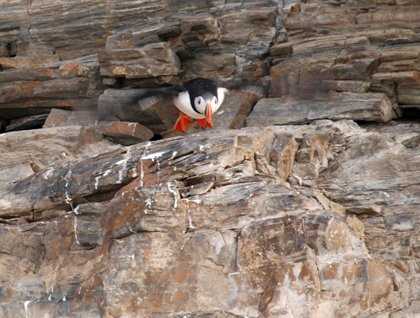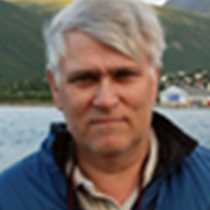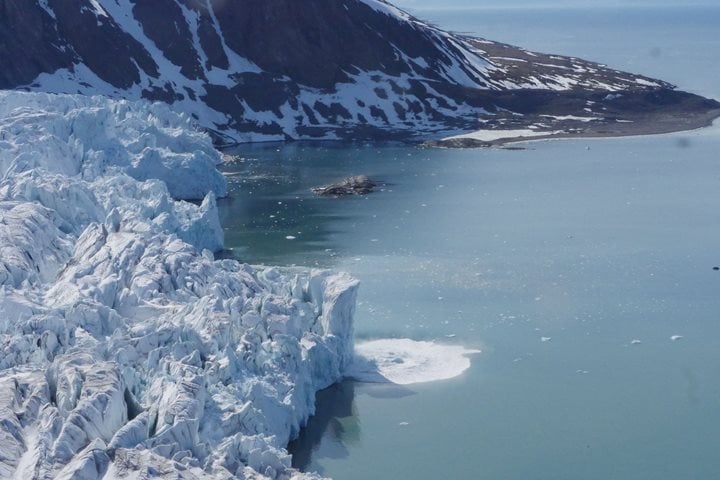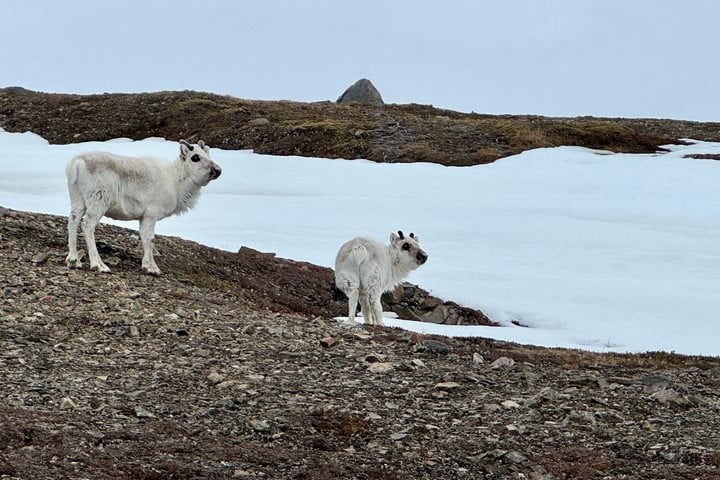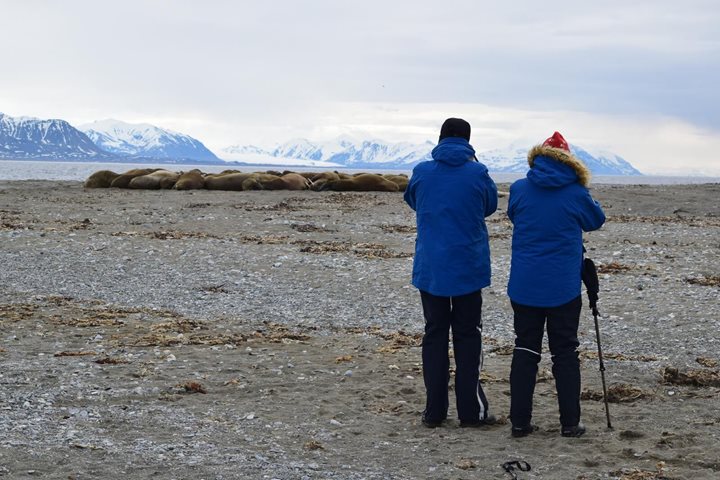Through the ‘night,’ or at least we here can say the part of the 24 hours daylight when we had some sleep, the ship sailed around the very historical part of northwest Spitsbergen. In the morning we entered the third largest fjord system along the west coast of Spitsbergen; Kungsfjord. Here you find one of the most northern settlements in the world, Nyålesund. It is a former settlement established around World War I for coal mining, but after a terrible mine explosion in the early 1960s, it was deserted. Nowadays it is a flourishing scientific settlement with scientists arriving from all over the world. Nyålesund was also the center during the epic start of aerial expeditions to the North Pole in 1920s. Here explorers gathered at this starting point, and today you can still see the steal tower which both the dirigibles Norge (1926) and later Italy (1928) used as the docking station before they headed to the Pole.
Today the ship was anchored in one of the side arms named Krossfjord and into an even smaller fjord by the glacier named July 14Breen. It received its named during one of the expeditions to Spitsbergen set by Prince Albert I, from Monaco, on his own private yacht, Alice, explored the area. This little fjord arm was used on July 14, the national day of France, by the ship’s captain who was of course French.
One of the side of this fjord arm has high-steep cliffs and houses a huge number of breeding seabirds, mainly kittiwakes and guillemots. All these seabirds bring ashore tons of food that later becomes fertilizer below the cliffs and creates a lush layer of vegetation. Soon our hikers were ashore and were able to find the first flowers, purple, tufted saxifrage, and moss campions, all in full bloom. There were reindeer further up the slope grazing on the first fresh and rich new growth.
The long hikers went for a real treat with hiking uphill to adore a marvelous icescape and get an overview of the fjords. They were also rewarded with beluga whales slowly swimming along the coastline heading deeper into Krossfjord and encounter higher up rock ptarmigans. Other guests preferred a Zodiac cruise to explore the fjord and sighted puffins, breeding barnacle geese and glaucous gulls.
Soon all returned back to the ship to enjoy a ‘Swedish lunch’ with plenty of marinated herring, ‘pannbeef’ with mashed potatoes with additional aquavit, while we cruised deeper into the fjord system and ended up by the impressive glacier front of Lilliehöök breen, more than four nautical miles wide.
During Captain’s Farwell cocktail our photo team had put together an amazing slide presentation with photos contributed by staff and guests aboard to summarize our expedition. It is striking how much we have been able to see and encounter during our one-week odyssey in the high Arctic, but the 24 hours daylight create opportunities you only can find in the polar regions. Many will for sure remember the pristine snow and icescape and of course the polar icons, white bears and blubbery walruses as the ‘topping on the cake.’
Still on the expedition! This Recap was interrupted by an announcement by our expedition leader as we just reached the shelf drop off, with two blue whales ahead of the ship. What better grand finale can you have on any expedition? The largest animal ever to live on this planet!

